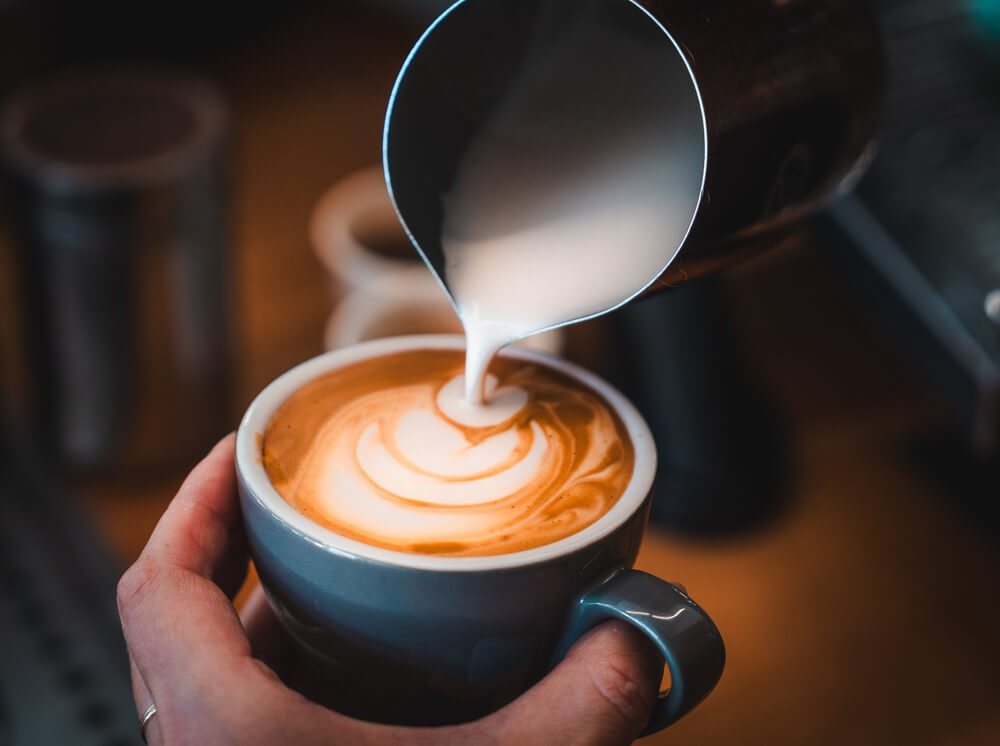What is a Cappuccino? A Deep Dive into the Popular Espresso-Based Beverage

A cappuccino is a classic espresso-based drink that has become a staple in coffee culture worldwide. For those new to the world of coffee beverages, understanding the basics of a cappuccino can enhance your appreciation for this popular drink. At its core, a cappuccino is made up of three equal parts: espresso, steamed milk, and milk foam. This harmonious blend creates a rich and balanced flavor profile that many coffee enthusiasts adore.
The term “cappuccino” originates from Italy and refers to the Capuchin friars’ robes, which are similar in color to the beverage itself. In terms of preparation, it starts with a shot of espresso as its foundation. The espresso provides a strong base with its bold flavors extracted from finely-ground coffee beans. Next comes the steamed milk, which adds creaminess and helps balance out the intensity of the espresso. Finally, it’s topped with frothy milk foam that not only adds texture but also enhances the overall drinking experience.
Understanding these elements is essential when exploring different coffee terms and options at your local café or when making one at home.
The Origin and History of Cappuccino
Cappuccino, a staple in Italian coffee culture, has a rich history that dates back centuries. The origin of cappuccino can be traced to the 17th century, where it finds its roots in the Viennese coffee tradition. However, it wasn’t until the early 20th century that cappuccino began to take on its modern form in Italy.
The name “cappuccino” is believed to derive from the Capuchin friars, whose brown robes are reminiscent of the drink’s distinctive color. Over time, Italians perfected this delightful concoction by balancing equal parts espresso, steamed milk, and frothy milk foam. By the mid-1900s, cappuccinos had become an integral part of Italian coffee culture and were enjoyed as a morning ritual across cafes throughout Italy.
The traditional cappuccino is celebrated for its harmonious blend of flavors and textures. It exemplifies not only a love for coffee but also an appreciation for artful preparation and presentation. Today, while variations exist worldwide with different milk types or flavorings added, the classic Italian cappuccino remains a beloved choice for coffee enthusiasts who appreciate both its historical significance and timeless appeal.
The Ingredients and Structure of a Perfect Cappuccino
Crafting the perfect cappuccino is an art form that hinges on the precise balance of its core ingredients: espresso, steamed milk, and milk froth. Understanding the structure of this beloved coffee beverage is essential for achieving that ideal cup.
At the heart of a cappuccino lies a rich espresso shot, which forms its robust base. This concentrated coffee provides the strong flavor profile needed to complement and contrast with the creaminess of milk. The next layer is steamed milk, which adds a velvety texture and subtle sweetness. It’s important to steam the milk just right to achieve a smooth consistency without overheating it.
The crowning glory of a cappuccino is its thick layer of milk froth. This airy foam should be dense enough to hold its shape but light enough to blend seamlessly with each sip, creating a harmonious balance between liquid and air.
The classic coffee foam ratio for a cappuccino typically follows an equal thirds rule: one-third espresso, one-third steamed milk, and one-third frothed milk. This structure ensures that every element plays its part in delivering the quintessential cappuccino experience.
Cappuccino vs Other Coffee Drinks
When it comes to espresso-based beverages, the cappuccino stands out as a classic favorite, but how does it compare to other popular coffee drinks? Understanding the differences can help you choose the right cup to suit your taste.
Starting with the latte vs cappuccino debate, both drinks contain espresso and steamed milk, but in differing proportions. A latte typically has more steamed milk and a light layer of foam on top, resulting in a creamier texture and milder coffee flavor compared to the balanced blend of equal parts espresso, steamed milk, and foam found in a cappuccino.
Next up is macchiato vs cappuccino. A traditional macchiato is simply a shot of espresso “stained” with a small amount of foamed milk. This results in a much stronger coffee flavor than that of a cappuccino, which offers more balance between its components.
Finally, consider the flat white vs cappuccino comparison. While both drinks use similar ingredients (espresso and microfoam) the flat white generally contains less foam than a cappuccino and features velvety microfoam that integrates smoothly with the espresso for an intense yet creamy experience.
These distinctions among types of espresso drinks highlight how subtle variations in preparation can lead to distinct flavors and textures, allowing coffee enthusiasts to find their perfect brew based on personal preference.
The Art of Making a Great Cappuccino at Home or in a Café
Crafting a perfect cappuccino is both an art and a science, whether you’re at home or in a café. Understanding the essentials can elevate your coffee experience to new heights. The foundation of any great cappuccino is the espresso. For those making cappuccinos at home, investing in a quality home espresso machine is crucial. It ensures you get that rich, concentrated shot of coffee that serves as the base for your drink.
Once you’ve mastered the espresso shot, it’s time to focus on frothing milk—an essential skill for achieving that creamy texture and velvety foam characteristic of a well-made cappuccino. Barista tips for cappuccinos often emphasize the importance of using cold milk and a clean steam wand to create microfoam with tiny bubbles that blend seamlessly with espresso.
For those looking to refine their technique further, consider experimenting with different frothing methods. Manual frothing pitchers can offer more control over texture, while automatic frothers provide convenience and consistency. Remember, practice makes perfect; each attempt will bring you closer to crafting that ideal cup.
Whether you’re serving yourself or guests at home or impressing patrons in a café setting, mastering these elements will ensure your cappuccinos are always top-notch.
Popular Variations and Flavors to Enhance Your Cappuccino Experience
Cappuccinos have long been a beloved staple in coffee culture, but did you know there are numerous ways to enhance your cappuccino experience with exciting flavors and variations? Flavored cappuccinos offer a delightful twist on the classic, allowing coffee enthusiasts to explore new taste dimensions. One popular option is adding chocolate or cinnamon toppings to your cappuccino. A dusting of cocoa powder or grated chocolate can add a rich, decadent layer of flavor that complements the robust espresso and creamy milk. Similarly, a sprinkle of cinnamon can infuse your drink with warmth and spice, perfect for those who enjoy a hint of aromatic complexity.
Seasonal variations in coffee shops also contribute to the diverse world of flavored cappuccinos. During autumn, you might find pumpkin spice cappuccinos gracing menus, offering notes of nutmeg and clove that evoke cozy fall vibes. Winter often brings peppermint-infused options that provide a refreshing contrast to the hot beverage’s warmth.
These creative enhancements not only cater to different palates but also allow coffee shops to showcase their inventiveness by introducing limited-time flavors that keep customers coming back for more. Whether you’re enjoying your cappuccino at home or exploring seasonal offerings at your favorite café, experimenting with these popular variations can elevate your everyday coffee ritual into an extraordinary experience.
Cultural Significance and Modern Trends in Drinking Cappuccinos Worldwide
Cappuccinos, with their rich blend of espresso, steamed milk, and foam, have transcended their Italian origins to become a beloved beverage in coffee culture worldwide. The cultural significance of cappuccinos is deeply rooted in Italy’s coffee tradition, where this drink is not just a morning ritual but a social experience. Italians typically enjoy cappuccinos at breakfast, often paired with a croissant or pastry.
As the global popularity of Italian coffee drinks has surged, so too has the evolution of cappuccino consumption across different continents. In recent years, trends in specialty coffeeshop drinks have introduced variations that cater to diverse tastes and preferences. From plant-based milk alternatives like almond or oat milk to innovative flavors such as pumpkin spice or matcha-infused cappuccinos, these modern twists reflect the dynamic nature of contemporary coffee culture.
In many countries, drinking cappuccinos has become synonymous with leisurely brunches and social gatherings in trendy cafes. This shift highlights how the beverage acts as both a comforting routine and an opportunity for cultural exchange. As specialty coffee shops continue to innovate and experiment with new concepts while honoring traditional methods, the humble cappuccino remains at the forefront of global coffee culture.

